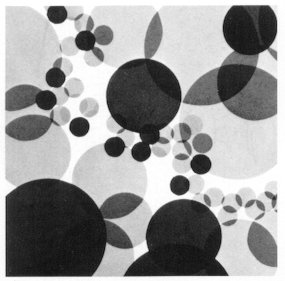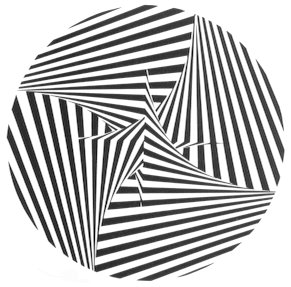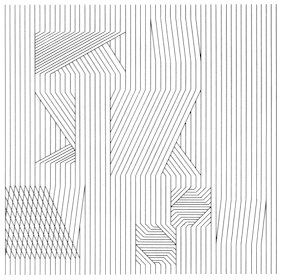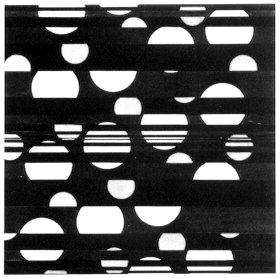|
Alternatively, let us think of the case of piling colored cellophane papers or overlapping transparent printing ink. In these ways, the piled or overlapped part adds a new color which is the result of the addition of the two colors, so that no part of the former shapes are concealed. You can see both the piling and piled shapes, and the effect of transparency is produced. "The combination" is the case when two shapes are united and fused into one. Of course the original shapes should have the same color. An unexpected shape can appear as a result of combining several shapes without changing color. In this case, for retaining the former image before combining, it is desirable to use particularly clear, concrete forms such as circles and squares, for it helps to distinguish between shapes. In the case of the shapes which consist of lines, the overlapped areas are extremely narrow, so the original shapes remain (Fig. 113). I would like to introduce some interesting examples in which some characteristics of the overlapping combination are adopted. As a result, these become complicated to the sense of sight. In Figure 116, on the wall made of vertical parallel lines, open some windows, at which the parallel lines are folded and run obliquely. The vertical lines of window frames hide and make the end of the parallel lines. So, the phenomenon of the addition II of the overlapping arrangement occurs at the window frames, creating the foreground-and-background relation in space. But if you look precisely at the large window of the center, a part of the oblique parallels of itself joins with the vertical lines at the crosspiece of the upper side of the large window frame, which is in the center of the picture.
|



